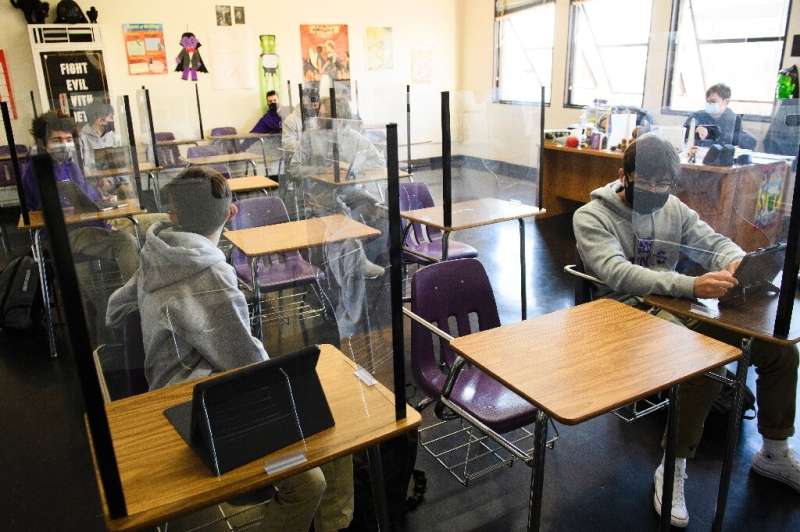As pandemic rages globally, US set to vaccinate low-risk teens


The imminent authorization of the Pfizer Covid-19 vaccine in adolescents is expected to give the United States’ stalling immunization campaign a boost while helping more schools return to in-person learning.
But it has also sparked a debate about the ethical considerations of vaccinating a low-risk population while the pandemic rages in other countries, such as India, where high-risk groups remain under vaccinated.
Pfizer and its partner BioNTech said in March their two-dose regimen was shown to be safe and highly effective in a trial of nearly 2,300 12 to 15 year-olds.
Should an emergency use authorization (EUA) be granted—as is widely expected by next week—President Joe Biden has called on states to quickly get as many adolescents as possible vaccinated by the time schools reopen in fall.
Almost 148 million of the country’s 330 million people have received one or more doses—around 44 percent of the population.
But the rate peaked around April 10 and has been declining since then, with vaccine hold-outs slowing the race to population immunity.
Former FDA commissioner Scott Gottlieb told CBS News on Sunday there are about 17 million children between the age of 12 and 15, and he expected a surge of interest from eager families right away.
‘Short-sighted’
Many experts have, however, voiced concern whether now is the right time to immunize American teens as the global situation deteriorates.
The question of vaccine inequity has been brought into sharp focus by India, which reported 350,000 new cases Tuesday and recorded nearly 3,500 deaths—more than anywhere in the world.
“The overwhelming majority of 15-year-olds, we know are not at high risk of severe complications from COVID,” ER doctor Craig Spencer, director of Global Health in Emergency Medicine at Columbia, told AFP.
“It is absolutely raging around the world and we’re talking about how we’re going to vaccinate an incredibly low risk population, when the overwhelming majority of health care workers around the world have zero protection,” he said.
Priya Sampathkumar, chair of Infection Prevention & Control at Mayo Clinic in Minnesota, added that beyond being an ethics issue, exporting more vaccines was in America’s own self interest.
“Vaccinating more people in the US is not going to help us if the variants in India, Nepal and South Asia get out of control and hit our shores,” she told AFP.
“It’s short-sighted to continue vaccinating people here and not send vaccines to areas where it’s most needed.”
The US has pledged to release up to 60 million doses of the AstraZeneca vaccine, but Spencer, Sampathkumar and others believe much more can be done.
Low risk
Sampathkumar added that the main reason to vaccinate teens is to drive down transmission—a goal which she agreed with, though with US cases declining, it is a question of timing.
“Most children actually just recover quickly, and really the reason to vaccinate them is to protect the adults in their life, grandparents, people who are immunosuppressed who’ve been vaccinated themselves but often don’t mount as good of an immune response,” she explained.
The statistics show children are generally at extremely low risk from severe Covid.
In the United States, under-18s have accounted for 277 deaths in total, according to the latest official data, a miniscule fraction of the total of 574,000.
There have been a further 36 deaths from multisystem inflammatory syndrome in children (MIS-C), a rare but serious post-viral disease.
Still, low risk isn’t no risk, and pediatrician Lee Beers, president of the American Academy of Pediatrics, welcomed the arrival of a vaccine for children.
“This is a tremendous step forward in protecting our children and allowing them to safely return to doing all the things they love to do without worry,” she told AFP.
Beers called vaccinating teens “an important tool in our toolbox for safe return to schools,” saying it may “increase the comfort for many families and school staff.”
Data aggregated by the site Burbio shows 67.1 percent of US school students are attending schools in-person, while 29.6 percent are in a “hybrid” set-up combining in-person and remote classes, and 3.3 percent are learning virtually.
Source: Read Full Article




